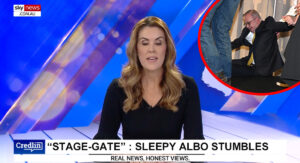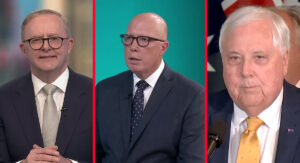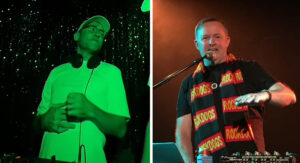General News

 |
[Edition 38] Hollywood mourns one of its own today, as controversial actor, Robert Downey Jnr was pronounced DOA at a New York City hospital, following a suspected massive deliberate drug overdose. His death is the subject of rife speculation that he may have been a victim of the so-called “Flockhart Syndrome”.
|
Downey felt that in playing the romantic foil to Flockhart’s quirky leading lawyer, he was participating in the creation of something inutterably evil |
[Edition 38] Hollywood mourns one of its own today, as controversial actor, Robert Downey Jnr was pronounced DOA at a New York City hospital, following a suspected massive deliberate drug overdose. His death is the subject of rife speculation that he may have been a victim of the so-called “Flockhart Syndrome”. It’s victims have taken their own lives rather than continue to act out, or film, the drab lives of the grim collection of petulant, self-obsessed characters that make up the episodes of Ally McBeal.
Downey was born on April 4, 1965, in New York City. His first introduction to excruciating leading ladies came with his performance as a charming womaniser in The Pick-up Artist (1987), a romantic comedy co-starring Molly Ringwald.
Later that year, he played a flamboyant, charming, womanising cocaine addict in the film Less Than Zero, which marked his “arrival” as a Hollywood star. Downey enjoyed the role so much that many say he never stopped playing it.
In August of 1996, Downey was stopped by police, and policemen discovered crack cocaine and heroin in his car, along with an unloaded firearm, all of which Downey claimed were for “medicinal purposes”. He was sent to jail for three years.
Despite his legal situation, Downey managed to complete a number of films during the late 1990s, but his unerring instinct for disaster never left him. Two Girls and a Guy (1999), where Downey played a charming womaniser, testament to this instinct.
In the summer of 2000, Downey commenced working as guest star on the Fox comedy-drama Ally McBeal. It is clear that a new and tragic cloud was forming over the troubled actor during this time: Flockhart Syndrome.
It is widely known to the medical community that an organism under sufficient duress will take its own life rather than endure overwhelming agony, and it should come as no surprise to the television-viewing public that one such physiological pain is the viewing of Ally McBeal.
What is less well understood is the crisis of confidence experienced by those individuals who are actually complicit in the production and distribution of unalloyed human misery. Despite the constant diet of crack cocaine and heroin to deaden the guilt, Downey clearly felt that in playing the romantic foil to Flockhart’s quirky leading lawyer, he was participating in the creation of something inutterably evil. Close friends have revealed his fear, shared in drunken and drug-binge crazed monologues, that his face would be associated with McBeal and that the horror would not only plague this season, but be featured on re-runs and syndicated rights, spreading its tentacles down through the years and across the globe.
As rating climbed, so did Downey’s options narrow. Without commercial success, he would be denied the source of funds to support his predilections and peccadiloes, estimated in their prime at costing up to $1000 per day. (Comparative celebratists estimate his needs as being for enough drugs, random sex and general bad-boyness to sustain five hundred Douggie the Pizza Boys, nine Leonardo Di Capprios, four Hunter S Thompsons, two River Phoenixes or three tenths of one Russell Crowe).
However, Downey understood only too well that the more the show was a success, the more people would demand a diet of asinine story-lines, and ridiculous asides featuring the signature non-realistic cut-ins, wrapped around ludicrous “legal” plotlines with cases of relationship breakup, interpersonal tension and twee emotional vignettes that might otherwise find their jurisprudential zenith on the letters page of Cosmo.
Eventually, the strain grew too much. For his career, his credibility as A Bad Dude Who Knows Where The Party Is, and for the sake of future generations, he had to act. We may never know what lethal cocktail he mixed that day, prior to stumbling back on to the set. We can say with confidence, however, that it was mixed by an expert. With an agonised cry of “Wow … great rush … um … peace, I out” he expired on set, taking with him the hopes of a further series, and bringing to a close a dark chapter in the history of comedy-dramas.





